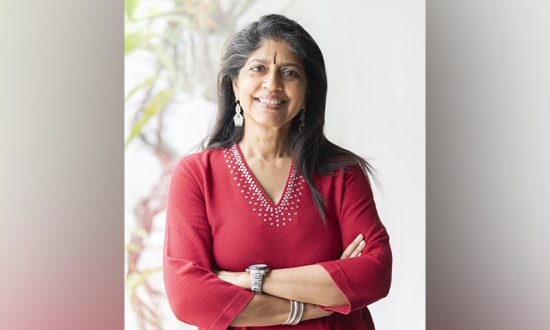As the Museum of Art & Photography’s (MAP) first Director, Kamini Sawhney has brought together a young, inspired team that is focused on creating a new museum experience for audiences in India. In leading this founding team, Sawhney has helped shape a vision for MAP that seeks to inspire people to interact with art in ways that encourage humanity, empathy and a deeper understanding of the world we live in. She has been a vocal ambassador for MAP presenting the institution’s plans and aspirations at various fora including the India Art Fair, at workshops at the CSMVS, Mumbai (Museums and the City), the Bangalore Literary Festival and the Bangalore International Centre.
Several centuries ago, during the renaissance, Leonardo da Vinci showed us how a study of the sciences can help provide solutions in the art space. And today again we are witness to the way technological interventions have transformed cultural experiences; the Van Gogh immersive experience is a case in point. Whether in the form of digital photography, video art, film and installation pieces or others, technology today has grown to have a significant impact on the operations, economies and patterns of consumption of the art world. From smart buildings and collection management systems to online auctions and the recently popularised creation and sale of NFTs, from immersive installations and viewing rooms to online exhibitions, virtual backgrounds on Zoom and even Google Chrome extensions, technology has most certainly made its mark in both how museums today are run and how they connect with their publics. The pandemic too fuelled this digital boom in an unprecedented manner, wherein museums and cultural institutions across the globe were inspired to think differently (and digitally) in order to remain relevant to their audiences, while also reaching new audiences across the globe. Just a few years ago it would have been difficult to imagine seeing a gallery exhibition online, let alone an entire art fair! With this acceleration in innovation, the gap between audiences and museums or cultural institutions is diminishing today through the power of technology to enliven spaces, to initiate critical conversations and more importantly, to attract young people.
For museums especially, the integration of technology into the physical spaces, curation or programming has proven to be extremely rewarding as we see a higher percentage of young people taking a keen interest in visiting or engaging with museums all over the world. Let’s take for example the recent collaboration between the Metropolitan Museum of Art in New York and the American telecommunications company Verizon through which the museum offered augmented reality (AR) versions of some of its masterpieces. Online visitors could explore galleries, play games and “unlock” works of art that one could display “virtually” at their respective homes for a certain period of time, enabling people to click selfies with the artwork in their space and share on popular social media platforms, such as Instagram. Through this project, people were not only able to increase their knowledge of art history, owing to the games and quizzes, but also gained access to one of the world’s greatest collections, and to visual art in general, which has for centuries been perceived as a luxury reserved for the elite or uber wealthy. With over 50% of the world’s population having access to the internet today, technology allows museums to both scale and democratise the manner in which people engage with their collections, like never before.
Through the power of AI-driven innovations and collaborations with some of the biggest tech players in the world, the Museum of Art & Photography (MAP) stands as one of the primary institutions committed to changing the perception of art in India, and using technology to bridge the gap between the museum and audiences. MAP and Accenture Labs have collaborated to present India’s first conversational digital persona of the celebrated artist, M F Husain. A unique digital experience created to engage audiences of all ages, Husain’s persona provides a glimpse into the life and works of one of India’s most compelling artists. Viewers can simply ask Husain’s digital twin a question regarding his early life, family or career to receive a simulated response from him. While Husain’s voice has been digitally created using speech synthesis softwares, the questions and answers have been prepared through extensive research on the artist.
In India, there already exists a huge gap between museums and its publics, since most audiences (young and old) consider museums to be dull, uninteresting spaces. Given the significant loss of tangible and intangible heritage in the country, it has become even more important to educate the masses about the importance of art and culture in our daily lives. Technological innovations such as these are therefore critical to inspire a greater public engagement with art and culture. In the past few years, we’ve seen many museums within the country unlock the potential of technology to reinvent themselves, and to remain relevant in the 21st century, especially for younger audiences. An innovative use of technology enables museums to stand out as exciting, interactive and engaging spaces; a space where a teenager might feel comfortable spending an entire afternoon learning about the country’s rich artistic and cultural heritage without thinking of it as an extended history lesson.


